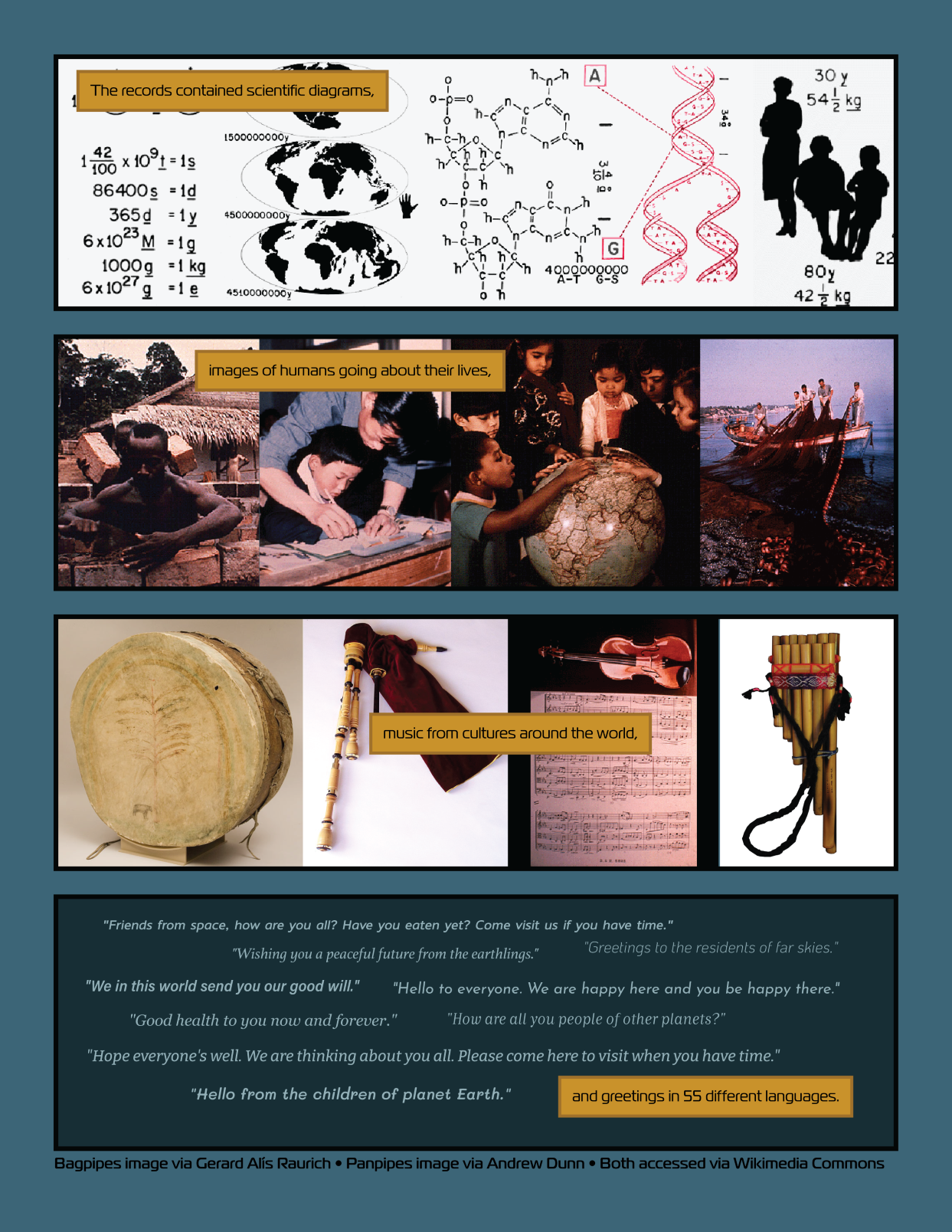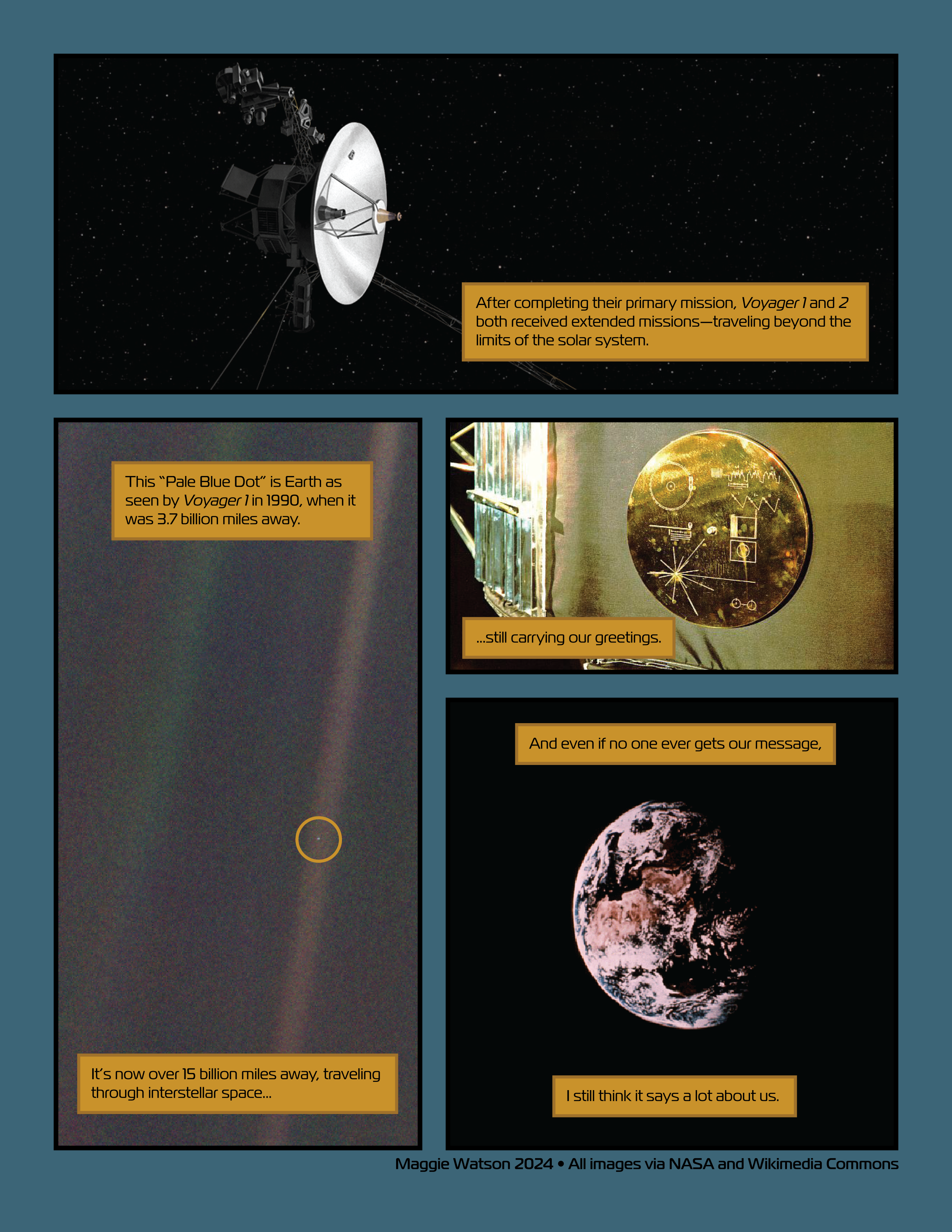The Sounds of Earth
Junior, Stamps School of Art & Design



Photocomic
Abstract
This photocomic tells the story of the Voyager Golden Record through photographs, including many of the original images from the record. The golden records carry a message from humanity to extraterrestrial life that has now traveled over 15 billion miles from Earth aboard the Voyager I and Voyager II spacecraft. Among many other things, the record contains greetings, laughter, and music from around the world. This comic highlights an important moment in the history of spaceflight and an example of how creative expression and scientific curiosity go hand in hand.
The golden record was conceived as a time capsule that would represent humanity to any extraterrestrial civilization that might find it in the far future. Its creators had to consider how to communicate and encode information in a way that could be interpreted by completely alien beings. They chose to use the simple technology of analog record, with pictorial diagrams explaining how it could be played and how to interpret the image data. The records were plated with gold to prevent corrosion and ensure they lasted as long as possible.
Titled “The Sounds of Earth,” the record contained audio recordings of both nature and human activity, including ocean waves, whale song, laughter, and music from around the world. Possibly the most famous contents of the record are the spoken greetings in 55 different languages, including “Hello from the children of planet Earth.” Also encoded on the record were 115 images. Some were scientific diagrams explaining human biology, scientific notation and units of measurement, and mapping our place in the solar system, in an effort to explain the record’s origins. Others were images that captured human cultures and technologies around the world.
After the Voyager probes finished their original mission, they were given a new mission to journey through the farthest reaches of the solar system and into interstellar space. Voyager I is now the farthest human-made object from earth, over 15 billion miles away.
I see the golden record as a demonstration of how much care, creativity and compassion there is in scientific fields like astronomy. Science is sometimes depicted as purely “logical” and separated from emotion, but the inclusion of the golden record on the Voyager missions shows the role that art and expression play in scientific endeavors.
“The Sounds of Earth” is a photocomic, a comic in which the panels contain photographs instead of drawings. I wanted to include as many of the original images from the golden record as I could. Because these photos have a distinctly older look to them, I went for a slightly retro style in the rest of the comic to match.
With its human element, the story of the golden record is a perfect opportunity for science communicators to engage the public in space exploration, especially in the exciting possibilities of the search for extraterrestrial life. I envision this comic as something that might be featured in a kids’ science magazine, as an approachable and fun introduction to the history of NASA and spaceflight.
